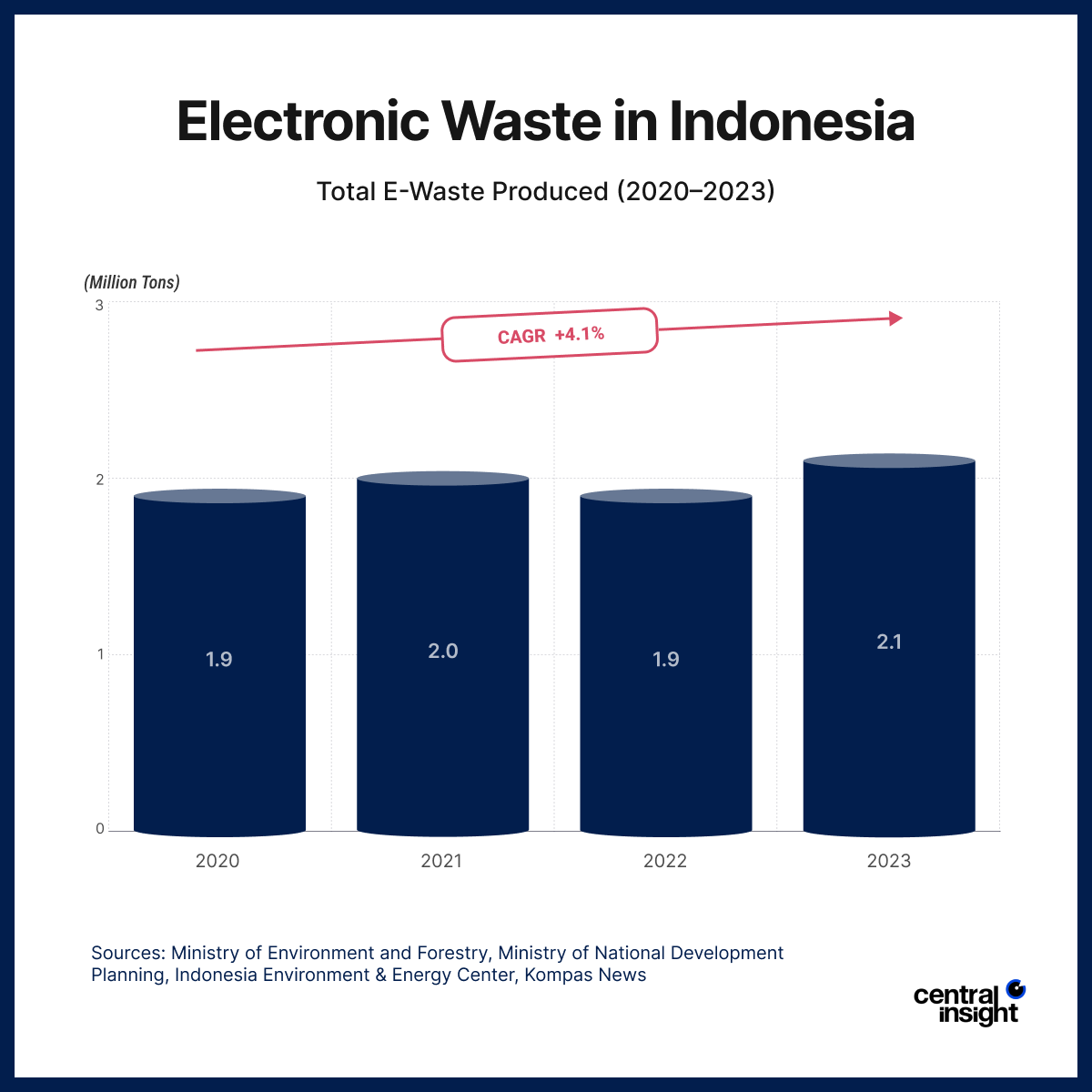Electronic waste, or e-waste, has become one of Indonesia’s fastest-growing waste streams. Between 2020 and 2023, e-waste generation rose from 1.9 million tons to 2.1 million tons, reflecting a compound annual growth rate (CAGR) of 4.1%. This steady increase is largely fueled by Indonesia’s rising household purchasing power, rapid urbanization, and accelerating technological adoption. While these trends signal economic progress, they also pose an urgent environmental and health challenge.
Factors Driving E-Waste Growth
Indonesia’s growing middle class has driven higher demand for smartphones, laptops, TVs, and other electronic gadgets. With trends such as frequent upgrades and the appeal of new features, devices are replaced at increasingly shorter intervals. This “throwaway culture” creates a surge in discarded electronics, most of which are improperly disposed of.

The environmental consequences are severe. Many e-waste items contain toxic substances, including lead, mercury, and cadmium. When disposed of in landfills or handled informally, these materials can leach into the soil and contaminate water sources, posing risks to both human health and ecosystems. Informal recycling, common in parts of Indonesia, often involves burning or acid treatment to extract valuable metals, further releasing harmful emissions into the air.
Indonesia currently lacks a robust, nationwide e-waste management infrastructure. Collection and recycling remain fragmented, mostly handled by informal workers without adequate safety protocols. Although several pilot programs and initiatives exist in major cities like Jakarta and Surabaya, these remain far from sufficient to address the scale of the problem.
Read Also: How B3 Waste Mirrors Manufacturing Trends in Indonesia
The Role of Awareness and Education
Looking ahead, Indonesia is expected to generate as much as 3.2 million tons of e-waste by 2040 if current trends continue. Addressing this looming crisis requires a multi-faceted approach: stronger regulations, formalized recycling systems, investment in green technology, and public education campaigns to encourage responsible disposal and longer product life cycles.
Without swift and coordinated action, e-waste could become a major environmental and social burden, overshadowing the economic benefits of technological advancement. The time to act is now.








